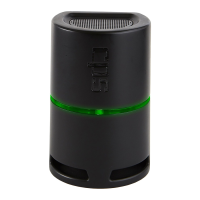12
AIR QUALITY (Issues, Causes, Solutions) Cont’d
Indoor Air
Quality Issues
Potential Causes Recommended Solutions
Recommended
Indoor Levels
High tVOC Level
VOC Contaminants
Remove contaminants inside home or
garage
No federally enforce-
able limits, but 50 ~
325 ppb are thought
to be acceptable, but
recommended to not
exceed 500 ppb.
The U.S. EPA reports
that on average, 60% of
VOC's enter the home
through an attached
garage
Improve ventilation inside home or garage
Add garage ventilation fan to exhaust/create
negative pressure
Seal garage/mud door from home
Mechanical equipment
issues
Inspect gas appliances and heaters for leaks
High CO
2
Level
Insufcient returns
Add or increase size of return registers in
bedrooms
350-1,000 ppm
is typical level in
occupied spaces with
good air exchange.
Inadequate ventilation
Add ERV (Energy Recovery Ventilation) or
HRV (Heat Recovery Ventilation) to exchange
stale air with fresh air
High Or Low
Building
Pressure
Negative air pressure in
summer
Inspect windows, doors or other openings in
the building envelope for air leaks
Slightly positive
+.02-in. to +.03-in.
WC. can make a
huge difference in
building comfort and
efciency.
Negative air pressure
in winter
Positive air pressure in
summer
Positive air pressure
in winter
High Or Low
Dew Point
In the summer, conden-
sation forms on ducts,
air diffusers, walls or
ceilings
Ensure AC system is proper size (tons) and
functioning properly. Check ductwork or
building envelope for leaks. Determine if
insulation missing
OSHA recommends
24 to 60 °F (−4.5 to
15.5 °C)
In the winter, conden-
sation forms inside
exterior walls

